If you were to draw a line on a globe from Derby to the Taj Mahal in India it would pass through Poland west to east. Interesting, maybe, but not the subject of this blog.
There is a very significant link, and the link is George Curzon.
I suspect most of us will never have heard of him, but he was a significant British politician influential in Britain, Poland, and India. More precisely, George Nathaniel Curzon 1st Marquess Curzon of Kedleston, also known as Lord Curzon of Kedleston. He was an aristocrat born in the beautiful Kedleston Hall near Derby.
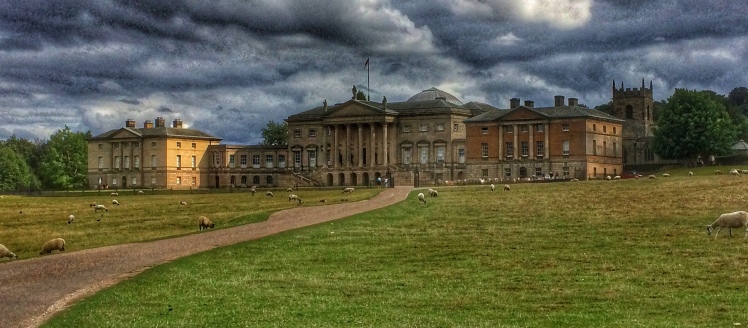
Kedleston Hall had been the Curzon family home for centuries. During the Second World War it was used as an army training and mustering camp and it was also used as an intelligence gathering station linked to Bletchley Park. It was bequeathed to the nation in the 1970’s in lieu of death duties, and it is now managed by the National Trust.
Born in 1859 into wealth and privilege George Curzon didn’t seem to have a happy childhood. His mother died when he was in his teens, and his father appeared to be uninterested. His early life was dominated by his awful, brutal and sadistic governess who forged his aloof, obsessional and combative qualities. It didn’t seem to get much better for him at Public School where he upset all sorts of people and where he had some sort of relationship that led to the dismissal of the infamous socialite Eton Tutor Oscar Browning.
At Oxford he was known for his aloofness and stiffness, though the latter was probably due to having to wear a metal corset for a back injury he suffered while horse riding in his youth. He became president of the Oxford Union and of a Conservative club. Not high achieving academically, he was a great though divisive public speaker and after university he entered politics in 1885.
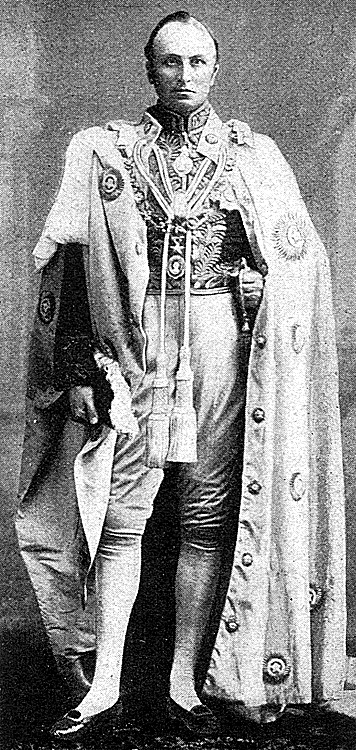
He loved travelling and writing, most famously in Asia. Interestingly he was there towards the end of ‘The Great Game’ which defined the diplomatic tensions that had existed for almost 70 years between Britain and Russia over military and commercial opportunities in Central Asia. Curzon considered that Russia was the biggest threat to the significant British interests in India. Unfounded as it turned out, but it encouraged Curzon to develop trade between Britain and what was then Persia (modern day Iran).
Anyway, by 1891 he was Under-Secretary of State for India, and from 1895-1898 Under-Secretary of State for Foreign Affairs before being appointed Viceroy of India in 1899. This was a massive post, basically the head of the British administration in India and overseer of all British interests.
Like much of his life opinions vary about his time in India, he was certainly there at some critical times including the Indian famine of 1899-1900 in which millions died and he was held responsible for the partitioning of Bengal that caused conflict between Hindus and Muslims. What is unquestioned though was his passion for the country, the culture and its history. He was instrumental in the restoration of many ancient monuments most notably the Taj Mahal for which he expressed a personal satisfaction and the nearby lesser known, but in my opinion just as spectacular, Fatehpur Sikri the deserted Mughal walled city. There are statues of him in both London and Kolkata (formally Calcutta) in India where several buildings and roads have also been named in his honour.
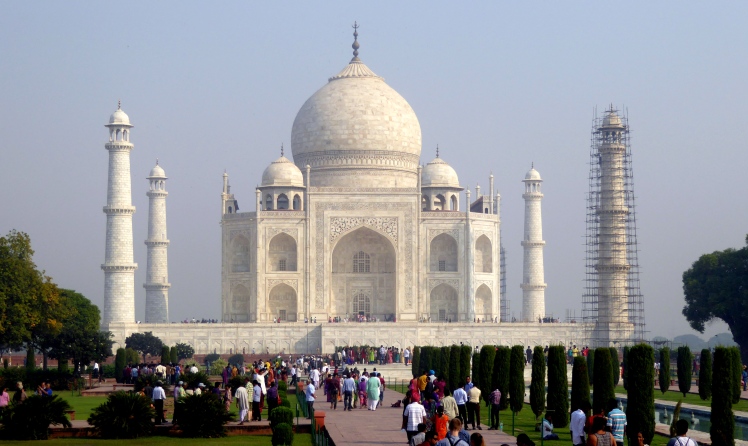
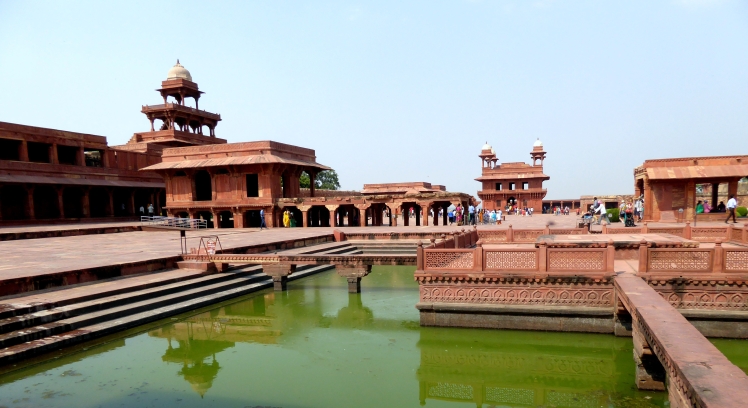
He also inaugurated the fantastic UNESCO World Heritage Kalka-Shimla railway that winds its way up the foothills of the Himalayas in Himachal Pradesh to what was the summer capital of British India in the city of Shimla.
Shimla is spectacular, and the views are stunning. It is also where Guy Gibson of Dambuster fame was born (see my blog https://pleszak.blog/2018/06/13/testing-and-training-for-the-dambuster-raids-whats-left-to-see/).
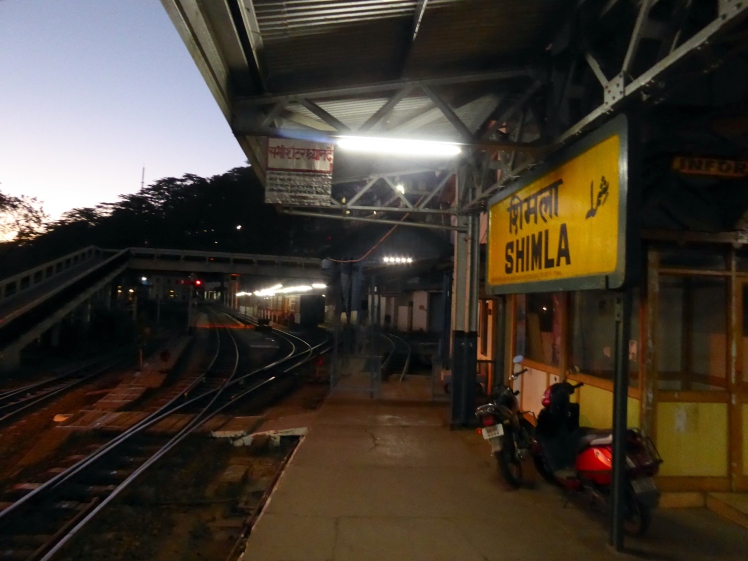
Curzon was forced out of India after clashing with Lord Kitchener and falling foul of Prime Minister Arthur Balfour. Not long after his return to England in 1905 he suffered the tragic loss of his wife leaving him with three daughters (a little more about them later….). It was his first time out of public service since leaving university. After a spell as Chancellor of Oxford University, he was back in parliament in 1908 and by 1915 in the War Cabinet as Lord Privy Seal.
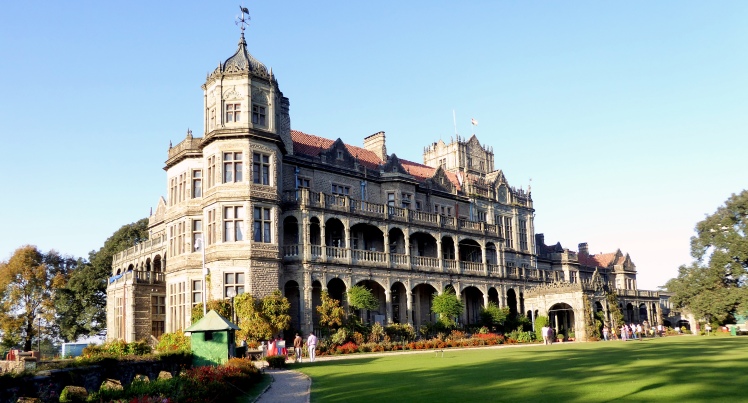
From 1919 he was Foreign Secretary in David Lloyd George’s government and amongst several significant achievements he was most notably responsible for the Peace Day celebrations on 19 July 1919 which included a temporary wood and plaster cenotaph. It was so successful and popular that it was replaced the following year by a permanent stone structure that was designated the UK’s official national war memorial and still exists today.
However, his most significant and arguably most contentious legacy was putting his name to the line on a map that defined the eastern boundary of the re-established sovereign Poland with Russia. The Curzon Line.
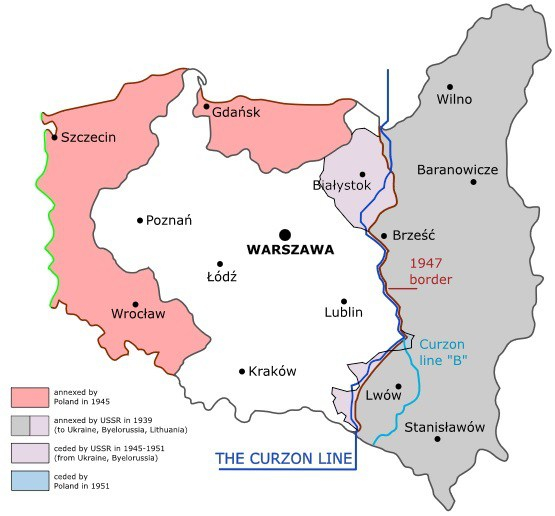
Poland hadn’t existed for 123 years, but the end of WW1 marked its resurgence as an independent sovereign nation. Poland wanted more land to the east and Russia understandably didn’t want to lose the land it had previously occupied whilst wanting to export communism to the west.
Though Russia was in turmoil internally a Polish-Russian War erupted. Initial Polish success was short lived, and the mighty Red Army advanced almost to Warsaw where, in August 1920, against all odds, they suffered a dramatic defeat in what is now known as the Miracle of the Vistula. The devasted Russian Army was driven back over 200 kilometres east of the Curzon line.
So, the pre-WW2 borders of Poland were established, the area east of the Curzon line became known as Kresy Wschodnie – the Eastern Borderlands. It remained a turbulent area and a special Polish Border Protection Corps – (KOP, Korpus Ochrony Pogranicza) was created to defend it.
The re-emergence of Poland had created tension both to the west in Germany and to the east in Russia and so the post WW1 peace didn’t last long. On 1 September 1939 Germany invaded Poland but it only advanced to the Curzon line. The Russians, in accordance with the Ribbentrop-Molotov agreement, invaded from the east on 17 September. Poland after just over 20 years in existence disappeared from maps, and the Curzon line now represented the boundary between east and west.
I’m not going to go into any details of WW2 other than to say that in 1941 Germany attacked Russia advancing beyond the Curzon line towards Leningrad, Moscow and Stalingrad. They were repulsed at all three cities and as the might Red Army advanced back west, the question of post war Europe began to be discussed by the allied powers. Poland clearly wanted the inter war borders to be re-established, but Stalin was adamant that the Curzon Line should represent Poland’s post war eastern border.
In what is known as the Western Betrayal Stalin got his way. The post-WW2 and current Polish eastern border is still roughly along the line outlined by Curzon. The previous Polish land to the east has become part of Belarus in the north and part of Ukraine in the south. The legacy of the invidious Curzon line lives on.
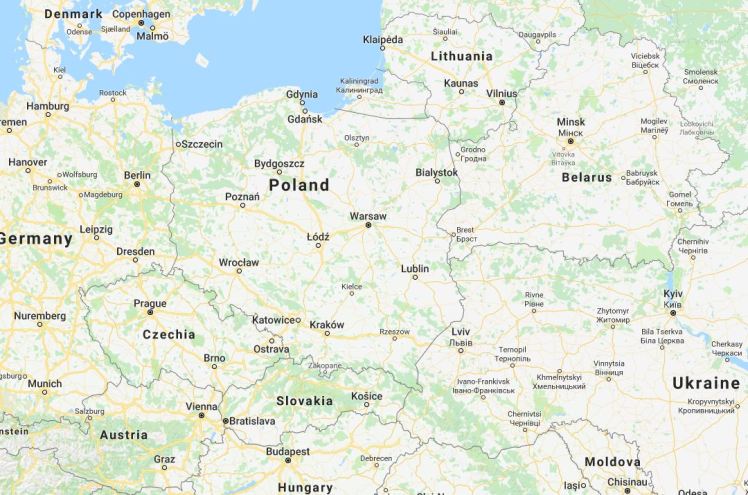
So, George Curzon, quite a character. An aristocrat, full of wit he led quite a remarkable life. He could, and perhaps should, have become Prime Minister in 1923 but was passed over in favour of Stanley Baldwin. Even his private life was quite something. He seemed devoted to his first wife but after her death he had a long affair with the famous novelist Elinor Glyn who was allegedly staying with Curzon when she read in the papers of his engagement to his second wife Grace Elvina.
Even Curzon’s daughters had colourful lives. Although he was supposed to have been an affectionate father he was domineering and controlling. Mary Irene, the eldest, a socialite had a string of affaires but never married despite several proposals including from Conservative MP Victor Cazalet, the British liaison officer to leader of the Polish Government in exile General Sikorski and who died with Sikorski in the mysterious plane crash in Gibraltar in July 1943.
The middle sister Cynthia Blanche was reluctantly allowed to marry the controversial politician Sir Oswald Mosley with whom she had 3 children. She died in 1933, after which her elder sister Mary Irene began an affair with Mosley, but even while Cynthia was alive their younger sister Alexandra Naldera (named after the place of her conception at Naldera near to Shimla) was having an affair with Mosley as was Curzon’s second wife Grace Elvina!
The intrigue doesn’t stop there: Alexandra Naldera had a long list of socialite lovers including, whilst in an affair with Mosely, having a relationship with the Foreign Secretary Lord Halifax, and Dino Grandi, Mussolini’s ambassador to England.
Mosley of course famously later married Diana Mitford at the home of Goebbels at which Hitler was a guest.
Interesting Links:
Kedleston Hall
https://www.nationaltrust.org.uk/kedleston-hall
Why Lord Curzon’s name is inscribed on a lamp that hangs inside the Taj Mahal
https://scroll.in/article/755316/why-lord-curzons-name-is-inscribed-on-a-lamp-that-hangs-inside-the-taj-mahal
One thought on “The line from Derby to the Taj Mahal that divided Poland”